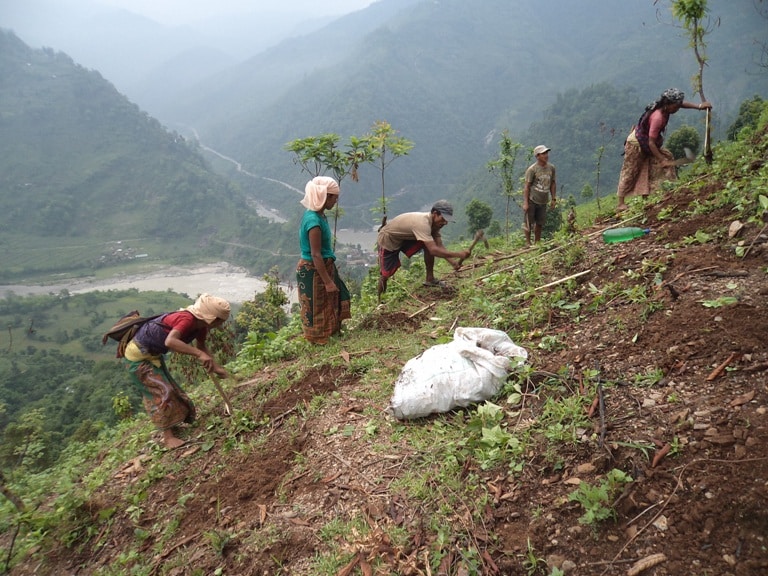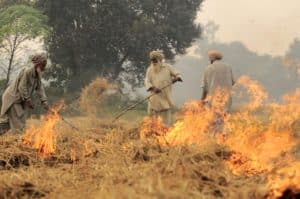Introduction:
Latest Applications Open 2024:
Shifting cultivation means the shifting of the land from the other place for cultivation purposes. In that there is the change of the place is taking place that means if there is the cultivation of the land is get reduced then by shifting it we can increase this.
In the different regions of the country, there is one unique feature of the shifting of the land in India. The purpose of minor and major variations, these have featured in the two distinct patterns are (i) settled farming on the permanent and developed land in the plains and valley areas and (ii) tribal agricultural practices.
The shifting of the cultivation is also known as its famous word is ‘Jhumming’, that name is given because the cultivation land can be on the slopes of the hills or it is called the Jhum that is available in the area of the hills. This region is used by the peoples of India that are in the region of the hills.
Origin of Shifting Cultivation:
Shifting cultivation is the method of primitive cultivation that is the primary method for cultivation and this process is originated in the Neolithic period that in the years between 13,000 to 3,000 B.C. Hence shifting cultivation is the best and the first way of changing the soil from the mind of the fertility of the soil in terms of the growth of the crops in the cultivation method.
In the starting period of the time, the system of cultivation is firstly used on the system as the regular bases that are at the hill areas of Africa and America. In some parts of the country of Sweden, there is a system of cultivation that was started in the year 1920.
In the middle of the nineteenth century, there were countries like the Europeans in Brazil and English settlers that were of the seventeenth century in Virginia of the U.S.A. they had also used this method of shifting cultivation.
Today’s Shifting Cultivation
In the country of India, there is still the use of the method that is shifting cultivation. That is being used in the region of the hill areas of that is the North-Eastern Region, Sikkim, Bihar, Orissa, Andhra Pradesh, Madhya Pradesh, Tamil Nadu, Kerala, Karnataka, and Maharashtra.
In these states, there are some of the places that are being used in the hill areas of North-Eastern states, Orissa and Andhra Pradesh. The shifting cultivation is briefly known as agriculture in the cultivate manner that is in the form of the Jhum.
In some regions of India, in the shifting cultivation, there is the use of agriculture which will be full of slash-and-burn agriculture, migratory primitive agriculture, nomadic agriculture, hoe and burn, forest field rotation, land-rotation agriculture, etc. On the side of North-East India, the type of shifting cultivation is known as the ‘Jhum’ cultivation or ‘Jhumming’.
It is said that if one crop is growing in one agriculture at a time and next time again it is used the same plants in the same field then the fertility of the land get decreases and by this, the area receives divested and as a result that the crops did not get grow in that field. This can be avoided by shifting cultivation, and that is called the ‘Jhummias.’
The process of Shifting Cultivation:
Shifting cultivation can be done in such a manner that agriculture should be done correctly. If there is the selection of the place or the plot is done improperly, then it can be the loss of the crops.
In the next step of this, there should be the cutting of the forest and the plants that are in that place to clean the field. The bushes and the forest get to be cut, or it can be burned also, by burning the ash will work as the energy for the soil.
This work of cutting cleaning and burning should be done in the month of December-January. After this, there can be made holes and it can dig the hole for the sowing of the seeds for the crops with the help of any instrument.
The dibbling of the land or making of the holes is done by the female workers and the sowing also. After this, there should be the springing of a sufficient amount of water on it and by this, the soil of the holes will be arranged on the holes upon the seeds.
By doing this the land of the shifted cultivation is get ready. Then after some efforts, the harvesting is get started, and this begins in the third month and continued in December. By this, the process of shifting cultivation is get completed.
Advantages of Shifting Cultivation:
The best position for the shifting of the cultivation or the land on the side of the hills is to provide a straightforward and high-speed method of the preparation of the area for agriculture.
The waste material of the field that is the bush and the weeds can be removed quickly and can be burned easily and can be obtaining beneficial things for cultivation. In this shifting cultivation, the growth of the crops will start fast and sometimes only it will get ready for the harvest.
In this shifting of the cultivation, there is no fear or danger of the flood and the animals which destroy the crops. On the hills, there are the streams of the mountain that provide the water to the crops easily at a regular and reasonable rate.
A disadvantage of Shifting Cultivation:
The most important disadvantage of the shifting cultivation is to cut the Forrest and the trees that are helpful for the soil erosion and that are very helpful to nature.
By this there can be heavy erosion of the soil is getting affected and by this, the rivers that are in the plain and low-lying areas like the Brahmaputra and Barak get flooded at the time of the heavy rainfall.
By shifting cultivation, there is a loss of 22 percent of the soil that is on top of the soil and full of fertility. This creates a serious problem in the economic rate of people. In this, there is the rendered permanent land in the shifting cultivation.
For any other queries about What is Shifting Cultivation, you can leave your queries below in the comment box.
Hi Guys, I am Sandeep Co-founder of IASpaper and UPSCToday Staying in Mumbai (India) and pursuing graduation in Computer Science and Engineering from Mumbai University. I love helping Aspirants.
You may join me on Facebook



